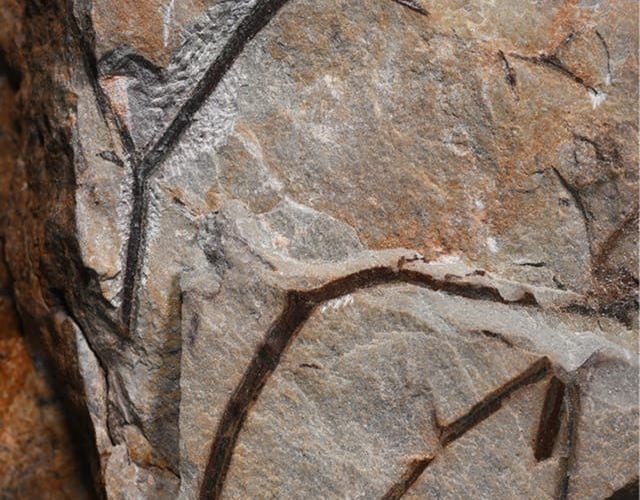PART of the Exmoor coastline has been revealed to contain the world’s oldest fossilised trees, outdating the previous record by about four million years.
Geologists from Cardiff and Cambridge Universities found remains of a fossilised forest in cliffs on the shoreline near Minehead accessible only from the sea.
The fossils were in high sandstone cliffs and were dated to 390 million years, making them older than fossilised trees found in New York state, in America.
They are known as Calamophyton and the scientists said from a distance they would have resembled palms, being a prototype of trees which are are familiar today.

Their trunks were thin and hollow in the centre rather than solid wood, standing between six and 13 feet tall, and rather than leaves the branches were covered in hundreds of twig-like structures.
The findings were published in the Journal of the Geological Society by Neil Davies, William McMahon, and Christopher Berry, whose research was funded by Natural Environment Research Council.
Cambridge geology Professor Davies said: “This was a pretty weird forest, not like any forest you would see today.
“There was not any undergrowth to speak of and grass had not yet appeared, but there were lots of twigs dropped by these densely packed trees, which had a big effect on the landscape.”

Cardiff palaeobotanist Dr Berry said: “When I first saw pictures of the tree trunks, I immediately knew what they were, based on 30 years of studying this type of tree worldwide.
“The most revealing insight comes from seeing, for the first time, these trees in the positions where they grew.
“It is our first opportunity to look directly at the ecology of this earliest type of forest, to interpret the environment in which Calamophyton trees were growing, and to evaluate their impact on the sedimentary system.”
Previously, scientists believed there were not any significant plant fossils in the West Somerset coastline.
The forest was dated to the Devonian period, between 358 and 419 million years ago, when life started its first big expansion on to land.
By the end of the period, the first seed-bearing plants had appeared and the earliest land animals, mostly arthropods, were established.
Prof Davies said: “The Devonian period fundamentally changed life on Earth.
“It also changed how water and land interacted with each other, since trees and other plants helped stabilise sediment through their root systems, but little is known about the very earliest forests.”
The fossil forest was in a Hangman sandstone formation which during the Devonian period was not part of England but connected to parts of Germany and Belgium.
The scientists said the site would have been a semi-arid plain, criss-crossed by small river channels coming from mountains to the north west.
The emergence of the first tightly-packed clusters of trees would have affected the way rivers flowed across the landscape.
Prof Davies said: “People sometimes think that British rocks have been looked at enough, but this shows that revisiting them can yield important new discoveries.”




